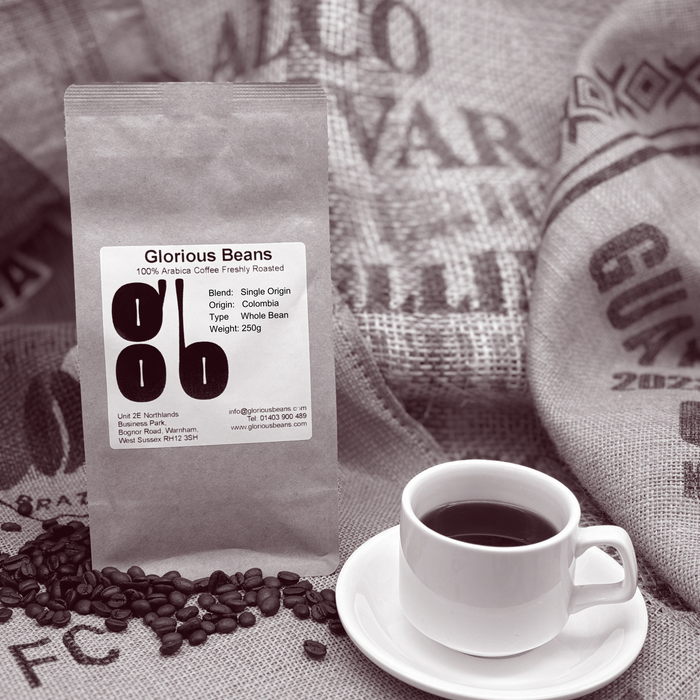Where to Buy Genuine SOE Single Origin Espresso Online
Coffee Beans Uncovered: Finding the Keys of Espresso and Blended Coffee Beans
When you think of coffee, what comes to mind? Is it the rich aroma of espresso or the intricacy of a well-crafted blend? Comprehending the nuances of coffee beans can transform your experience. Each range, from Arabica to Robusta, holds its own secrets. As you discover further, you'll reveal how these beans shape flavors and impact sustainability. What might you find regarding your following cup?
The Beginnings of Espresso: A Historical Point Of View
Although coffee is now a staple in coffee culture worldwide, its beginnings map back to the very early 20th century in Italy. You may be stunned to find out that the development of espresso was driven by a wish for speed and efficiency. In 1901, Luigi Bezzera patented the initial coffee machine, aiming to make coffee faster than standard techniques. This innovation promptly recorded the attention of Italian coffee enthusiasts, leading to the coffee bars we recognize with today.
Recognizing Coffee Beans: Attributes and varieties
When you think of espresso, it's important to identify the various bean ranges and their one-of-a-kind tastes. Each kind brings an unique personality to your cup, influenced by variables like roast levels. Recognizing these aspects can elevate your espresso experience significantly.
Coffee Bean Varieties
As you discover the world of espresso, you'll rapidly uncover that not all beans are developed equal; each range brings its very own distinct tastes and characteristics to your mug. Arabica beans are recognized for their smooth, nuanced flavors and reduced high levels of caffeine web content, making them a preferred amongst coffee lovers. Each selection supplies something different, so trying out will aid you locate your perfect coffee.
Flavor Profiles Described
Comprehending the flavor accounts of various espresso beans can boost your coffee experience. Each bean variety uses special qualities that affect preference, fragrance, and mouthfeel. As an example, Arabica beans often present a sweeter, a lot more complicated taste with hints of fruit and floral notes, while Robusta beans have a tendency to be bolder, with nutty and natural touches.
When you explore single-origin beans, you may discover unique regional flavors-- Central American beans might be citrusy and bright, whereas Italian blends usually provide rich, chocolatey notes.
Roast Levels Impact
Roast levels play an essential duty in forming the taste and aroma of espresso beans, influencing your total coffee experience. Understanding these roast degrees assists you choose the espresso that fits your taste choices. Trying out with various roasts can lead to fascinating explorations, improving your gratitude for espresso.
The Art of Mixing: What Makes Blended Coffee Unique
What makes mixed coffee so interesting? It's all concerning the art of integrating beans from different beginnings, roast levels, and taste profiles. You're not just blending; you're creating an unified balance that highlights the toughness of each bean when you mix. You can experiment with different combinations to improve body, level of acidity, and sweet taste, resulting in a mixture that's richer and more intricate than a single-origin coffee.
Blending additionally enables you to accommodate varied taste choices. You can craft a mix that's mellow and smooth or one that's strong and durable, depending upon your target market. Plus, blending can help preserve consistency, providing a reliable flavor experience no matter of seasonal variants in beans. Whether you're a home or a barista brewer, grasping the art of mixing opens up a globe of creativity and flavor opportunities, making your coffee experience genuinely unique.
Flavor Accounts: Tasting Notes of Coffee vs. Blended Coffee
Blended coffee provides a world of flavor opportunities, however when it concerns espresso, you're taking a look at a more concentrated experience. Coffee typically showcases strong, rich flavors with a thicker mouthfeel. You might notice notes of dark chocolate, caramel, and even hints of fruit, depending on the beans. The intensity can be both pleasing and rejuvenating.
On the other hand, combined coffee offers a complex tapestry of tastes. You can discover a range of sampling notes, from wonderful and nutty to flower and fruity. Each mix can use something unique, usually combining beans from various areas to create a Visit Website balanced account.
While espresso delivers a punch, mixed coffee welcomes you to savor the nuances. Whether you favor the robust stamina of espresso or the detailed tastes of mixed coffee, each cup tells its very own story, waiting on you to uncover.
Developing Techniques: Refining Your Coffee Shot
To accomplish the perfect espresso shot, comprehending the developing techniques is important, as also minor modifications can greatly affect the taste and top quality. Start by utilizing fresh, premium coffee beans; grind them right before brewing for maximum flavor. Go for a great grind, about the uniformity of table salt, to assure optimal removal.
Following, take note of your water temperature; it should be between 195 ° F to 205 ° F. Too warm or as well cool can spoil your shot. Use about 18-20 grams of coffee for a double shot, and tamp it equally with strong pressure to produce a consistent puck.
A longer removal can lead to resentment, while as well short can result in sour flavors. Practice these methods constantly, and you'll improve your skills, attaining that rich, robust espresso shot you hunger for.
The Duty of Roast Degrees in Espresso and Blended Coffee
After mastering the brewing strategies for espresso, it's time to consider exactly how roast degrees affect the flavor profile of your coffee. Light roasts have a tendency to highlight the coffee's beginning, offering bright level of acidity and fruity notes, while medium roasts balance acidity and sweet taste, producing a well-shaped taste.

Checking Out Sustainability: Ethical Sourcing of Coffee Beans
When you select coffee, you're not just choosing a taste; you're making a selection regarding the influence on farmers and the atmosphere. Recognizing Fair Profession techniques, organic farming approaches, important site and qualification criteria can aid you sustain lasting coffee sourcing. Allow's explore just how these elements add to a more moral coffee experience.
Fair Profession Practices
Fair Trade methods play an essential role in making sure that coffee beans are sourced morally and sustainably. When you choose Fair Trade coffee, you sustain farmers that receive fair earnings and job in secure conditions. By opting for Fair Trade brands, you're not just enjoying an abundant cup of coffee; you're making a positive impact on the lives of those who expand it.
Organic Farming Methods
As you explore the world of honest coffee sourcing, organic farming methods arise as an essential part of sustainability. In addition, it usually leads to stronger, healthier coffee plants, resulting in richer tastes in your cup. When you decide for natural coffee, you're making an aware choice that benefits both the earth and your palate.
Certification Criteria Explained
Comprehending certification requirements is necessary for anybody thinking about morally sourced coffee. These requirements, such as Fair Trade, Jungle Partnership, and USDA Organic, assurance that Get the facts coffee is expanded under sustainable practices. When you select licensed coffee, you sustain farmers that stick to honest labor methods and environmental defense.
Fair Profession certification focuses on offering fair salaries and working conditions, while Rain forest Alliance highlights biodiversity and community preservation. Following time you're at your local café or grocery store, look for these labels, and really feel good understanding your coffee acquisition positively impacts communities and the atmosphere.
Regularly Asked Inquiries


How Does Elevation Influence the Development of Coffee Beans?
Altitude influences coffee bean growth by affecting temperature and environment. Greater altitudes commonly create denser beans with more complicated tastes, while reduced elevations can lead to faster development however much less tasty outcomes. You'll taste the distinction!
What's the Distinction Between Arabica and Robusta Beans?
Arabica beans are sweeter and more complicated, while Robusta beans have a more powerful, harsher flavor with higher high levels of caffeine web content. You'll discover Arabica liked for specialty coffees, whereas Robusta's typically used in instant coffee and espresso blends.
Can Coffee Beans Spoil or Lose Taste Over Time?
Yes, coffee beans can go bad and lose flavor over time. They'll come to be stale if you keep them improperly or keep them as well long. Constantly maintain your beans in a closed container far from light and wetness.
What Are the Wellness Benefits of Alcohol Consumption Coffee?
Consuming espresso boosts your power, enhances psychological clearness, and might decrease the risk of specific conditions. It's rich in anti-oxidants, supports metabolism, and can enhance mood, making it an advantageous selection for your everyday routine.
Just How Does Water High Quality Influence Espresso Removal?
Water high quality substantially affects coffee removal. It influences the solubility of flavors and oils, influencing taste and scent. Making use of filtered water can boost your espresso, making sure a satisfying and well balanced cup each time you brew.
Coffee Beans Uncovered: Finding the Tricks of Coffee and Blended Coffee Beans.
Understanding the taste accounts of various coffee beans can elevate your coffee experience.Roast levels play a crucial duty in forming the taste and fragrance of coffee beans, affecting your total coffee experience (SOE).Combined coffee supplies a globe of taste opportunities, yet when it comes to coffee, you're looking at a more concentrated experience.After understanding the developing strategies for coffee, it's time to contemplate how roast levels influence the taste account of your coffee